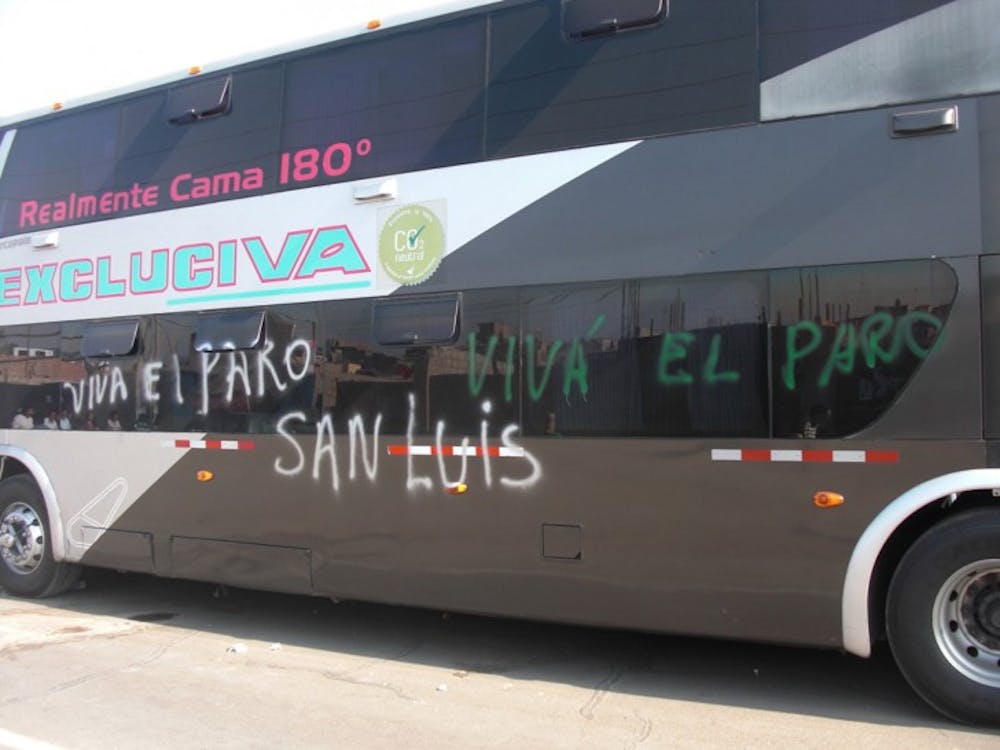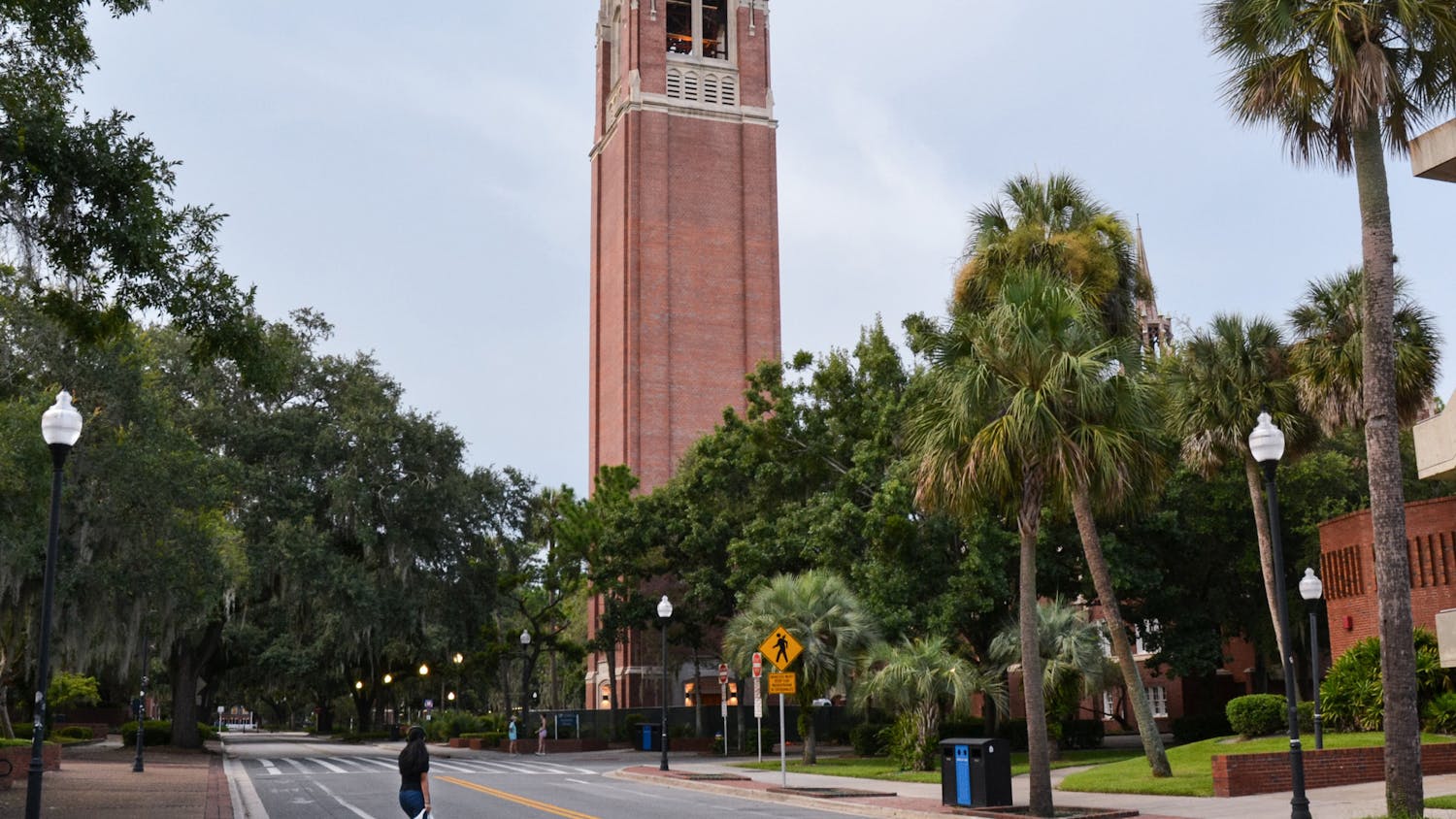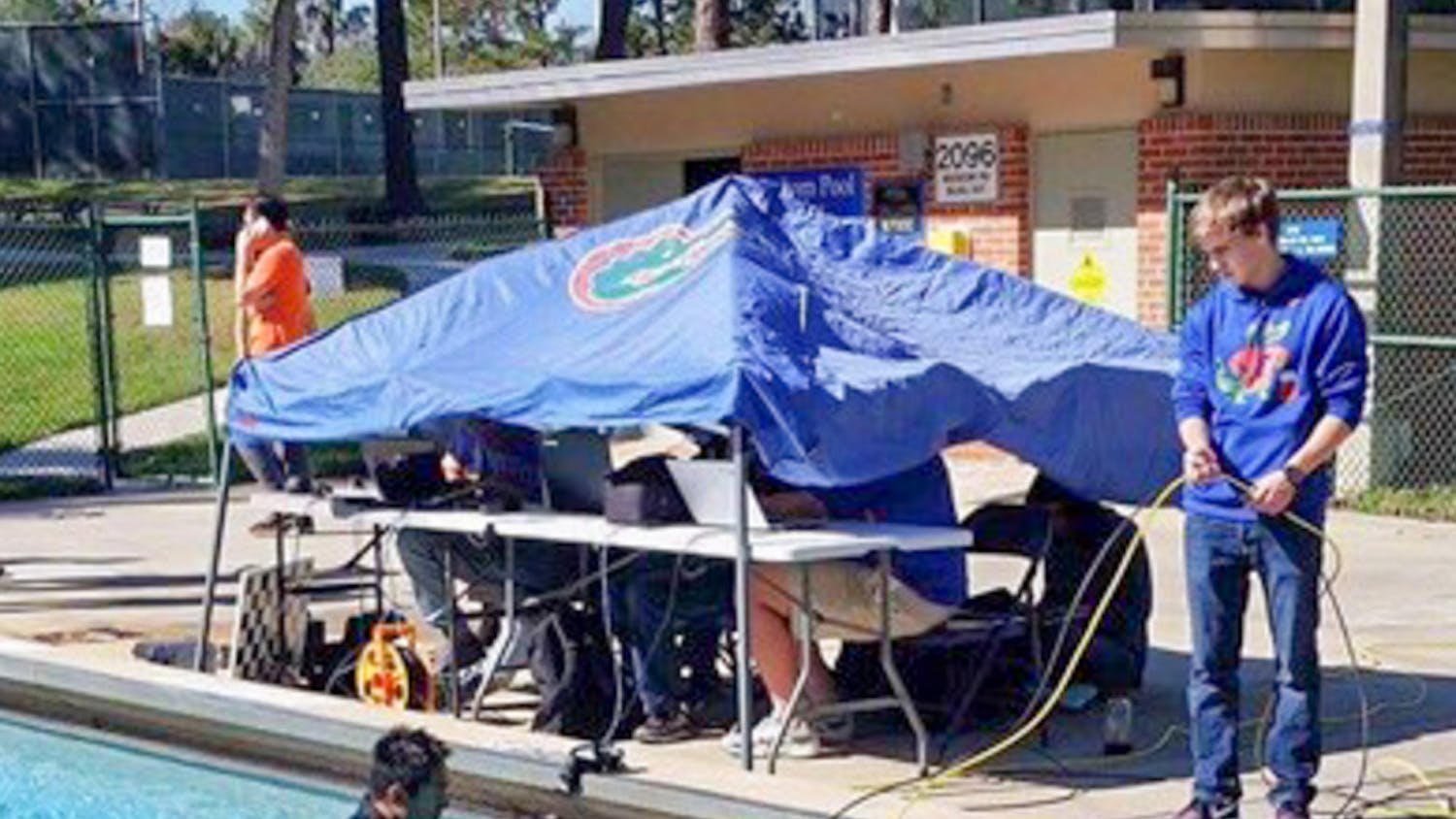Rest didn’t come easily for Jose Perez.
It was stiflingly hot on the Cruz del Sur tour bus, but for the 19-year-old anthropology and political science junior and the six other UF students traveling with him, it was better than sleeping exposed to the near-freezing temperatures of the Peruvian night.
The double-decker bus rested on a stretch of the Pan-American Highway in Peru, just north of the town of Chala. It was May 9, and the bus had barely moved during the last two days.
The students were a collection of Lombardi and Stamps Scholars. Their curiosity brought them to Peru more than a week before their Scholars in Peru study abroad program began, but a nationwide strike stalled their trip across the country.
On May 8, groups of independent Peruvian gold miners set up roadblocks to protest recent government regulation of their trade.
Since then, the stationary bus had become a makeshift prison. Miners spray painted the bus and beat on its walls with their fists.
The students had been unable to shower, change clothes or use a real bathroom since they first boarded the bus on May 7.
Two days later, they had to decide whether to stay on the bus or try to make their way to Lima, the capital, on their own.
Chala was running out of food and water, but if the students left, they’d be exposed to a strike that could easily turn violent.
It wasn’t what they had expected when they left the United States.
On May 7, the seven UF students flew into Lima at 1 a.m.
A bus took them south to Arequipa, where they planned to split into two groups. The students would reconvene in Cuzco on May 13. There, they would meet with their program director before the study abroad program began three days later.
Fewer than 17 hours after Tyler Benjamin arrived in the country’s capital, the 20-year-old journalism senior and his six companions boarded the tour bus. They’d be taking the Carretera Panamericana, or Pan-American Highway, which stretches the length of the country’s west coast. The journey to Arequipa was supposed to last 16 hours, and Benjamin was already anticipating hiking Colca Canyon as he drifted into sleep.
At 3 a.m. May 8, Benjamin awoke to other bus passengers whispering in Spanish.
The bus stopped about a half-mile north of the town Yauca.
It was there the miners scrawled “Viva el Paro,” long live the strike, on the bus. But there were no roadblocks, and the southward trek resumed before 6 a.m.
Three hours later, the bus was stopped outside of Chala.
About 100 vehicles lined the highway to the north and south, blocked by tires filled with burning debris. To the west, a 200-foot drop off a cliff led to the ocean. Decrepit one-story houses and desert lay to the east.
The road ahead was littered with the blue hard hats of sleeping miners.
“They were literally everywhere,” Perez said. He estimated about 400 miners were present on May 8.
Outside, the scent of burning rubber, human urine and decomposing trash began to fill the air.
Eventually, the student’s hunger forced them from their shelter. They hadn’t eaten a full meal since their departure.
“I thought I could ration my Clif Bars and water,” Benjamin said. “But after a day or two, I realized that wasn’t going to happen.”
In order to buy food in Chala, they had to cross the strike line.
Perez, who speaks fluent Spanish, acted as the group’s primary translator. He and the two other Spanish-speaking students gathered information about the strike in town.
The Peruvian government was trying to force independent miners to work for private companies. The miners didn’t want to be taxed for their work.
“We were literally caught in the power struggle of this government that’s trying to cover up the strike,” Perez said.
By 6 p.m. the sun had set, forcing the passengers back on the bus.
“We were told the army was coming,” Benjamin said. “Then, nothing.”
The next morning, about 10 police officers showed up with riot gear. They were outnumbered almost 60 to one.
The officers stood shoulder-to-shoulder at the strike line, but soon retired to eat Popsicles in the shade of the buses, Benjamin said.
No one else came, and conditions were worse for everyone trapped on the highway.
The holding tanks of the tour buses’ bathrooms were reaching their capacities, and drivers began to empty them outside. Rivers of waste streamed down the highway, and trash cans overflowed.
The radio chattered with people worrying about lack of supplies, and the students knew that could mean less food for everyone.
That night, a group of agitated passengers tried to remove the roadblocks, but the miners’ confidence and numbers had escalated, and they struck back.
Packs of 10 to 20 miners roamed among the buses, yelling at passengers and punching the sides of the students’ bus.
Inside, the students crouched in the middle aisle. They shielded their heads with food trays — Perez said it was the first time he’d ever feared for his life.
The miners eventually left, but the threat of violence pushed the students to act after two days and two nights.
Benjamin said he spoke to the State Department and the U.S. Embassy in Peru by cellphone earlier that day. Neither was aware of the strikes or roadblocks, nor could they provide help.
If the students were going to leave, they would have to do it alone.
They’d heard that three more strikes lay between Chala and the students’ original destination of Arequipa. Backtracking toward Lima, though, would mean crossing through the first strike they’d passed.
Either option would mean traveling by foot, unprotected.
By the morning of May 10, the strikers were acting as a militia, carrying sticks with nails driven through the sides.
That morning, Benjamin and another student were buying food in Chala when they saw a commotion on the highway.
“I saw people jogging back to their buses,” Benjamin said. “I hit [my friend] on the shoulder, told him we had to go and overpaid for the meal. I just gave the woman a coin and left.”
The travelers took shelter in their vehicles in case of a riot. But like the night before, the disturbance ended without violence.
At 11:30 a.m., Benjamin and the other students decided to leave.
He collected his bags and began marching north, toward the end of a line of 50 buses.
At the end of the line, the students found two men taxiing people to Yauca. The group pooled its money and bought two cab rides.
The taxi drivers dropped the students about a 45-minute walk south of Yauca.
Perez asked two Peruvian women if they were close to the end of the strike. They laughed.
“No, no, no, no,” one of the women said. “Lejos.” Far.
As the students approached Yauca, the damage from the strike became more noticeable.
Burned tires, electrical cords and rocks littered the way. After that, it was desert.
After nearly three hours of walking in the midday sun, Perez spotted a hopeful sign.
A car-carrier truck bearing a Brazilian flag sat unblocked on the service road that ran parallel to the highway.
Perez, who also speaks Portuguese, found out the truck belonged to a father and son who had been making trips to Nazca for supplies.
If each student paid about $22 — 10 times the normal cab fare in Peruvian cities — the Brazilians were willing to transport the group to Nazca.
“At this point, it just seemed like pennies to me,” Perez said.
The students arrived in Nazca that evening. There, they enjoyed their first showers and full meals in three days. They returned to Lima two days later.
On May 16 they began their study abroad program on schedule, spending the next week and a half building wood-fueled stoves in the highlands around Cuzco.
The students traveled to expose themselves to the world’s ills and wonders, and their three days on the highway had brought to life the gritty lessons they had only studied in the classroom.
“It was fantastic and romantic and terrifying and uncertain all at once,” Benjamin said. “For so long we did nothing to help ourselves, expecting it would just get resolved. I learned I can make moves for myself in a foreign country, no matter what.”






